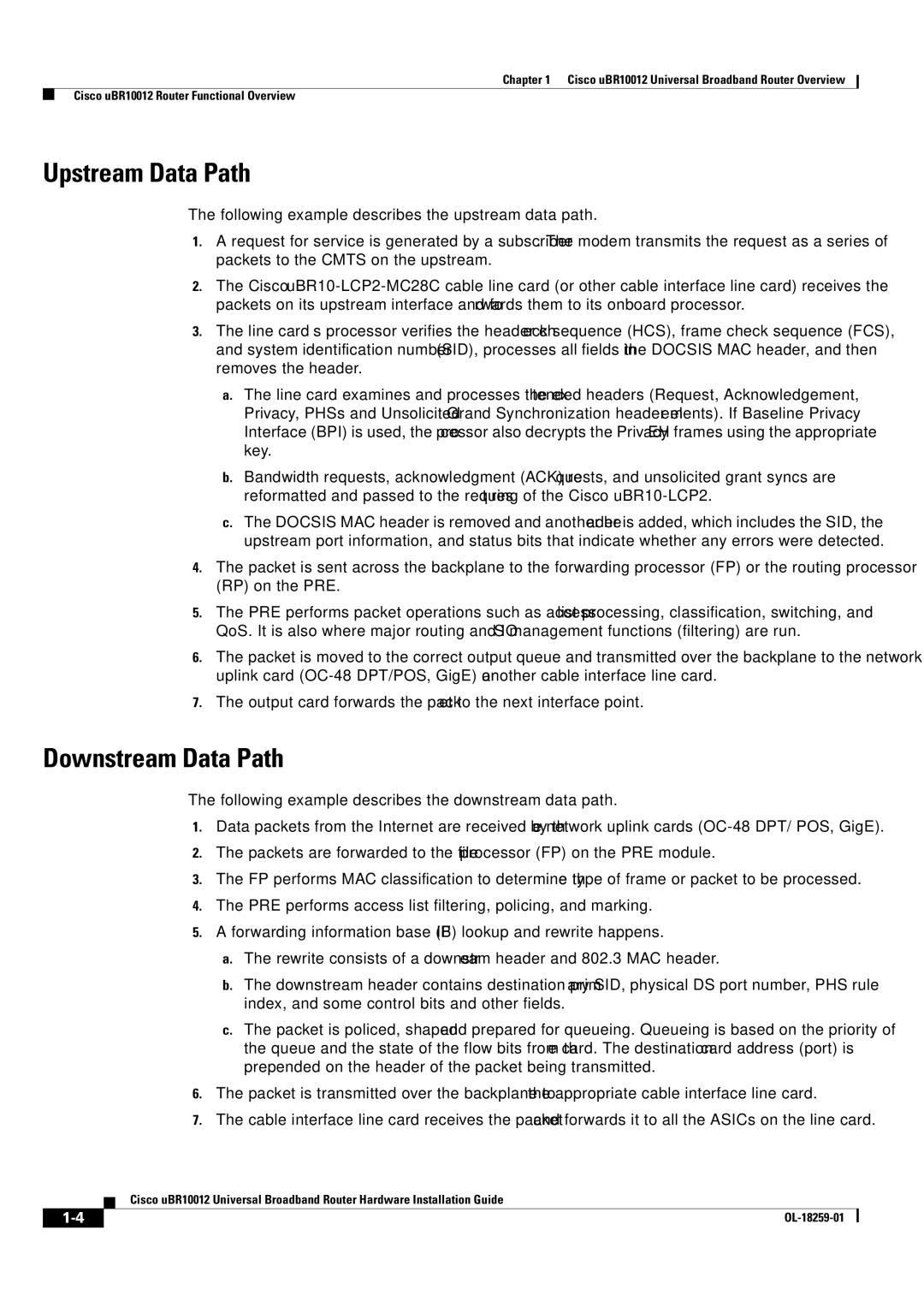
Chapter 1 Cisco uBR10012 Universal Broadband Router Overview
Cisco uBR10012 Router Functional Overview
Upstream Data Path
The following example describes the upstream data path.
1.A request for service is generated by a subscriber. The modem transmits the request as a series of packets to the CMTS on the upstream.
2.The Cisco
3.The line card’s processor verifies the header check sequence (HCS), frame check sequence (FCS), and system identification number (SID), processes all fields in the DOCSIS MAC header, and then removes the header.
a.The line card examines and processes the extended headers (Request, Acknowledgement, Privacy, PHSs and Unsolicited Grand Synchronization header elements). If Baseline Privacy Interface (BPI) is used, the processor also decrypts the Privacy EH frames using the appropriate key.
b.Bandwidth requests, acknowledgment (ACK) requests, and unsolicited grant syncs are reformatted and passed to the request ring of the Cisco
c.The DOCSIS MAC header is removed and another header is added, which includes the SID, the upstream port information, and status bits that indicate whether any errors were detected.
4.The packet is sent across the backplane to the forwarding processor (FP) or the routing processor (RP) on the PRE.
5.The PRE performs packet operations such as access list processing, classification, switching, and QoS. It is also where major routing and IOS management functions (filtering) are run.
6.The packet is moved to the correct output queue and transmitted over the backplane to the network uplink card
7.The output card forwards the packet to the next interface point.
Downstream Data Path
The following example describes the downstream data path.
1.Data packets from the Internet are received by the network uplink cards
2.The packets are forwarded to the file processor (FP) on the PRE module.
3.The FP performs MAC classification to determine the type of frame or packet to be processed.
4.The PRE performs access list filtering, policing, and marking.
5.A forwarding information base (FIB) lookup and rewrite happens.
a.The rewrite consists of a downstream header and 802.3 MAC header.
b.The downstream header contains destination primary SID, physical DS port number, PHS rule index, and some control bits and other fields.
c.The packet is policed, shaped and prepared for queueing. Queueing is based on the priority of the queue and the state of the flow bits from the card. The destination card address (port) is prepended on the header of the packet being transmitted.
6.The packet is transmitted over the backplane to the appropriate cable interface line card.
7.The cable interface line card receives the packet and forwards it to all the ASICs on the line card.
Cisco uBR10012 Universal Broadband Router Hardware Installation Guide
|
| |
|
